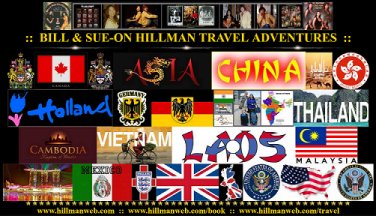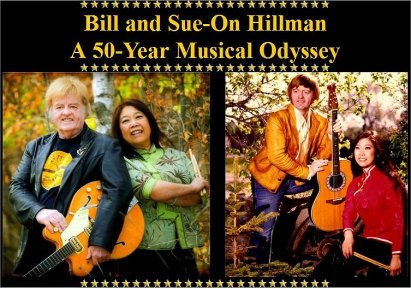ROAD TALES II: CANADA
 Between music tours and teaching we
have travelled extensively across Canada. Many of these travels are described
in our Musical Odyssey memoirs.
So many of our early travels across Canada are on album prints, slides,
and in early digital formats.
Between music tours and teaching we
have travelled extensively across Canada. Many of these travels are described
in our Musical Odyssey memoirs.
So many of our early travels across Canada are on album prints, slides,
and in early digital formats.
Some of our Canadian destinations
through the years include every province except PEI, most of Manitoba including
the North, St. John's, Halifax, Quebec City, Montreal Expo 67, Ottawa,
All of Southern Ontario, The Prairies: Diefenbaker home, PA Penitentiary,
W. Edmonton Mall, Calgary Stampede, Military Bases, Banff, Vancouver, Victoria
. . . and on and on.
Wartime Travels with the Royal
Canadian Navy
I was conceived in Halifax where
my dad was serving with the
Royal Canadian Navy. As the time of my birth approached my mom
returned to the Campbell farm in Strathclair to be home with her parents
for my birth. Later, my mom and I returned to the East Coast to be with
my dad who was now stationed in St. John's, Newfoundland. The ferry to
Newfoundland had been recently torpedoed by a German U-boat so we had to
take a TransCanada flight to the island. My parents boarded in a house
overlooking the harbour and docks where dad worked on the RCN ships.
Forty years later Sue-On and I returned
to St. John's and visited the home where my parents and I had lived. The
landlady fondly remembered my dad and mom and young baby Billie. She also
remembered how my parents loved music and had many jam sessions in their
rooms.
After St. John's my dad was stationed
at Esquimalt on Vancouver Island. We travelled across Canada by train.
Some of my first memories are of the smell of smoke and cinders from the
railway steam locomotives. There are many photos of me as a toddler playing
with neighbour children and even climbing a ladder to fruit trees behind
our house. Dad volunteered to serve on a joint Canada/England/Australia/USA
convoy to the Pacific to free the POWs in Hong Kong and to accept the Jap
surrender. Dad's ship, HMCS
Prince Robert was chosen to be first to free the Canadian POWs
since it was the ship that had transported these troops to Hong Kong before
the Jap invasion. An early memory is sitting on his knee while he said
his goodbyes.
Four decades later Sue-On and I
returned to Vancouver Island, this time to visit my sister Bonnie and her
husband Dr. Michael Schneider who worked for a time in Port Alberni before
moving to Calgary Foothills Hospital and later to Saudi Arabi whre he spent
20 years as a surgeon and instructor on laser surgery. We enjoyed exploring
many of the sites that my parents had mentioned from our WWII stay on the
island. On a later visit to Victoria we visited former bandmate Alan Jones
who had a physiotherapy practise. Alan had played organ with us for many
of the gigs during our first
two-month long music tour of England. He had also played on some
of the tracks on our London recording session.
Teenage Travels with the Royal
Canadian Air Cadets
After the war my parents had taken
over the family farm at Strathclair - a great place to raise my sister
Bonnie and me. Our family worked hard and didn't have an opportunity to
travel during those farming years. The only exceptions were my trips as
a cadet during my eight years as a Royal Canadian Air Cadet. Our 317 Strathclair
Squadron was picked up by a military bus many times for day-long sessions
at CJATC Rivers
-- an RCAF military base. These visits involved classes, games in the gym,
drill, weapons firing at the shooting range -- and the more exciting flights
in a DC3 Dakota and a Bell Helicopter. Seated on the side "benches" in
the rough-flying Dakota wasn't much fun for a kid proned to air sickness
but the helicopter ride over Manitoba farmland south of home was a great
thrill. We even landed on a steep hill near the Rivers Golf Course - I
was constantly reminded to duck when exiting the chopper. A warning that
the pilot himself unfortunately didn't heed. A few years later he left
the air force to work for a BC logging company and was beheaded while exiting
the craft that had landed on some rough ground.
My first Cadet Summer Camp experience
was to the RCAF base on Sea Island near Vancouver in 1958. We made this
trip on a commercial airliner. While there I was taken for a flight over
Vancouver Island in an RCAF Beechcraft Expeditor aircraft and was thrilled
when the pilot allowed me to take the controls for a while. Another unforgettable
experience was taking part in the colour party on the airport tarmac to
greet Princess Margaret when her Royal aircraft landed at the base to begin
a tour of Canada. Following this we were bussed to Empire Stadium where
I was thrilled to see my first football game under lights -- made even
more memorable because I had volunteered to be an usher while wearing my
cadet uniform. It was even more memorable as this was the stadium where
Elvis had appeared before a giant sell-out crowd the year before -- we
obviously missed that event but Sue-On and I eventually saw him in concert
a few years later. In the years since, the Vancouver International Airport
has been moved to the Sea Island location and we've flown in and out of
there numerous times on our trips to Asia and Southern California.
My second major trip via Air Cadets
was at St. Jean, Quebec near Montreal a year later. I left from Strathclair
CPR station in a passenger train driven by one of the last steam locomotives
in service. We then left from CF Base Winnipeg on a Flying Boxcar - C-119.
A plane that was often used in parachute drops - I wasn't given a chance
to jump out of the plane en route but we did have a bit of excitement.
The plane lost one engine and had to make an unscheduled landing at Toronto.
While at the camp we had many bus trips around the country and into Montreal.
We even visted St. Helen's Island which a few years later would be the
site of Expo 67 which Sue-On and I would have a chance to visit. One standout
memory was of guitar jam sessions with another budding guitar player.
Sue-On's
early travel experiences were very different. Her mom had smuggled
her as a toddler out of Red China to Hong Kong with a neighbour woman's
family. Years later, when Canadian Immigration laws relented, the ten-year-old
and her mom flew by airliner from Hong Kong to Alaska and then on to Canada.
This was followed by a long ride from Winnipeg to Newdale where her
grandfather and father had run a restaurant for many decades. When we met
we both dreamed of the time when we could be together, make music together
and see the world. When she turned 18 and we married we were at last able
to make these dreams come true.
EXPO 67 ~ MONTREAL
Our first vehicle was a used Rambler
station wagon in which we drove to Banff for our honeymoon. Next year we
drove this faithfull sputtering vehicle to Ottawa and then on to Montreal
for Expo 67. Coincidentally we stayed with my dad's sister Myrna and her
husband Lt. Col. Jim Grant who was a helicopter pilot stationed at St.
Jean. I had vivid memories of when Uncle Jim was taking helicopter training
in nearby CJATC Rivers
and landed his chopper out on our farm's pasture a few times. This huge
celebration of Canada's 100th birthday ran from April 27 to October 29
and was considered to be the most successful World's Fair of the 20th century
-- an unforgettable experience. The highlight for us was probably the Labyrinth
Pavilion which featured a National Film Board of Canada film and music
from a show we had done at the Austin's Threshermen's Reunion two years
before. The show ran non-stop all day, every day of the Exposition. The
film was projected on a wrap-around split screen -- quite revolutionary
for its time. It was a very popular pavilion and we had to wait in a long
queue before entry.
NEWFOUNDLAND
After Expo we bravely carried on
to the maritimes and eventually took the ferry across to Newfoundland.
We had slept in the station wagon during most of the trip. After docking
at Corner Brook we found a quiet spot to park for the night in school yard.
We had settled in nicely for the night when a police officer rapped on
our car window. There had been a series of break-ins and vandalism at the
school and he thought we looked rather suspicious. We innocently convinced
him that we were just weary travellers from the prairies and he gave us
permission to stay.
We eventually made our way to St.
John's where we explored all the usual tourist sites including locations
that my parents had described from our WWII stay there. We drove up Signal
Hill where fortifications had protected the harbour below for centuries,
right up to World War II. The view of the harbour from the famous Cabot
Tower was certainly worth the visit. This is the tower from which Marconi
made the first Trans-Atlantic radio broadcast in 1901. It was also an excellent
place to park for the night. We remember being kept awake for much of the
night by the sound of a dog lapping water. By the light of day, however,
we found that the lapping sound was caused by waves from the nearby reservoir
- George's Pond - breaking on the shore.
When I reformed our band so that
Sue-On could join me, we began six years of summer
tours of Exhibitions for the Federal
Grain Company who provided a portable stage and coach. During those
years we usually lived in our main tour bus but we also travelled in our
station wagon with a tent trailer, then a Volkswagan Westfalia camper and
eventually in a Ford Econoline Motor Home. Following those exhibition tours,
Sue-On and I and Barry Forman performed as a featured trio on USA Grandstand
Shows. Around that time we also did countless one-nighters, TV shows, and
even flew in to do shows at the Island Lake Indian Reserve in Northern
Manitoba. Upon landing, we and all our heavy music equipment were transported
across the lakes to the gig site on two canoes. The long speaker columns
were placed precariously across the gunwales of the canoes. Many of these
experiences are described in the Gig
Notes section of this book.
Although I worked full time as a
high school teacher and then as a University professor for 40 years, our
weekends and summers were spent performing -- either one-nighters or summer
tours. Following each summer's tours we almost always hit the road to explore
every Canadian province and American state.
TO BE CONTINUED . . . MUCH
MORE
www.hillmanweb.com/book/travel/roadtales3/


